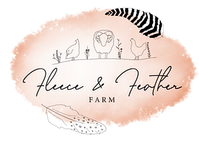My mother always said I am too busy and I do way too many things. She’s right, of course, but that’s not going to stop me.
For some reason I have it in my head that we are going to fence in another acre of land to be used as pasture for the horses, sheep, and goats. It always has seemed pointless to mow my lawn every week when I have several lawn mowers in my yard. Chris and I stocked up on fencing material and posts, and I made plans for the new pasture! GoogleMaps has a neat feature that will allow you to measure the distance of anything, so I used that tool to measure the perimeter of the future pasture to determine how many rolls of fencing, t-posts, and wooden posts we would need to make this dream a reality. Chris picked up three metal fencing rolls (330yds each) at Rural King and we found 50% wooden posts at Lowes, so we got 40 (because I love a deal). We have just about everything we need except a few t-posts, but otherwise we are set. Now to find the time…
I learned about pasture rotation when I was in college working on the organic dairy farm and while I was boarding Simon at a farm nearby. Pasture rotation involves a lot of planning and sticking to the schedule, as well as watching grass growth, the weather, the seasons, and parasites. It’s a simple, yet complicated balance of timing how the pastures are. Pasture rotation is the practice of moving livestock to different pastures, either daily, weekly, or monthly. By providing breaks for the pastures between rotations, it allows the grass to grow and recover, and limits the parasite population by limiting host interaction. The system I manage involves 1-acre quadrants, which allows me to rotate the animals once a week, and allows each quadrant to recover for 21 days. This isn’t ideal, since parasites tend to live up to 60-90 days without a host, but I am doing my best. My first year here at the farm, I lost a lamb to parasites. I de-wormed her with all three classes, gave her vitamins and minerals, anything I could think of. It wasn’t enough and I lost her. The worst parasite to ever encounter is the Barber Pole worm (Haemonchus contortus). These little worms are tough and they will kill anything in a matter of days if an infestation takes place.
Now I hadn’t had any sheep on my property for several years, so I thought I would be okay for a bit before getting into pasture rotation. Life doesn’t always work that way, which I will continue to learn time and time again. After Winnie passed away, I went full on pasture rotation mode. T-posts and electric line allowed me to break the 4-acre pasture into 1-acre quadrants. The horses and sheep did not understand for quite a while what I was doing, as they kept running down the fence. They’ve got it figured out now.
Last year was far better than the first year on the farm in terms of parasite control. I’m hoping that by adding this 5th pasture to the rotation, the pastures will improve in growth and quality, and that parasites will be almost a thing of the past.
Okay, so I have a passion for pasture. I could talk hours about this topic, because it is so vital to maintain the health of them since it is essentially a source of free food. During the winter, all of the quadrants were blocked off except one, which is where we fed hay and the animals were allowed to get some exercise if they could brave through the mud. Keeping two horses and 13 sheep on a 1-acre lot isn’t the easiest thing to do, but it was for their benefit in the end, and it did work out according to plan! By shutting off three of the quadrants, it allowed for the grass to hibernate and the soil to remain in decent condition as the animals weren’t trodding through it and churning up mud. The back three pastures look fantastic, with bright green grass popping up against the dull mud. The first lot looks like a mess, but now that it is shut off, I reseeded it with some pasture grass seed to help it revive to its former beauty. All the animals decided they preferred the farthest pasture, which I don’t blame them since it does look the best. They have been busting down the fence to get through to the back lot, and I finally gave in.
It’s taken a while to get the pastures figured out, the funding to put up fencing, and the patience to follow a strict rotational schedule, but I am seeing the benefits now, and it was worth every bit of effort!
Happy homesteading,
Rachel

.png)





留言